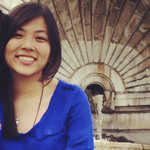It was a World’s Fair by another name. Built within ten years of half the city shaking and burning to the ground. 1915: February to December.
The Palace of Fine Arts and its magnificent columns, dome, and pond remains despite the facade crumbling away to reveal slapped concrete underneath. City leaders rallied to save it. Today it hosts weddings, tourists, swans, and a fair number of “aggressive” raccoons.
Its sister palaces—including education, food products, and the lowly liberal arts—exist now only in memory.
Meanwhile, Japan’s exhibition included a tea house. Destined for demolition—like the rest of the Panama-Pacific International Exhibition, so named to celebrate not just San Francisco’s rise from the ashes but also the completion of the Panama Canal—it was saved. It now resides south of the city, in Belmont, as a family restaurant.
There is a surviving police station (the North End) not on any map, just two blocks from the Court of the Universe, the Tower of Jewels. Someone lives in it now, never steps outside other than to relieve his dog.
In Civic Center, across town, the Bill Graham Civic Auditorium stands as a remaining structure of the Exposition. Later named as an honor to the famous concert promoter of Fillmore fame, and in the shadow of City Hall, itself an homage to Les Invalides in Paris. Where Napoleon now rests. It too—the SF City Hall, that is—rising from the burnt ground in 1915.
Back in the Marina, which is naturally a watershed; a mix of dunes, grasses, low slung oak trees, and collecting pools, the nearby neighborhood Cow Hollow achieving its name from the bovine who roamed nearby, slowly moving down to drink where early citizens washed; the Exposition remained popular throughout the summer.
Adolph Spreckels, a man who made his fortune in sugar, was impressed by the French Pavilion. Upon its planned destruction, he and his wife commissioned a scale replica to be called the Legion of Honor. It would be housed atop an old potter’s field (aka an early poorman’s cemetery, before they were all but one moved out of the city) in Lincoln Park, near the western terminus of the continental Lincoln Highway, its eastern terminus in Times Square, New York.
The Spreckels, who lived in a limestone mansion at 2080 Washington St., beget the Legion of Honor to, among other things, house their large Rodin collection, some of which resided on their front lawn. The museum now hosts one of Rodin’s The Thinker sculptures, one piece of a collection envisioning Dante’s Inferno; pieces also scattered across campus at Stanford University, an hour south.
Today at 2080 Washington St, romance novelist Danielle Steel lives behind twenty-foot high shrubs across from Lafayette Park. Her family’s multiple cars are cited as one reason why street parking permits are required in the area. On a personal note, when we lived nearby, her house was an agreed-upon meeting place for my wife and me following a catastrophic earthquake, our reason being that it was central, on a hill, and housed rich people inside, who would obviously be saved first by rescue teams.
Within months of closing, the abandoned Exposition was vandalized, burned down, torn down, or forgotten. For a time the natural grasses reclaimed the seashore. Eventually they too were torn out and dumped into the Bay, creating a false extension of the city. If you run along the Marina Green or even to Crissy Field just shy of Fort Point you can still see the remains of curved concrete and marble archways and pedestals long abandoned into the crashing waves.
The land was built up, creating today’s Marina neighborhood, built largely on sand and landfill both from the 1906 earthquake and the 1915 Exposition. During the 1989 Loma Prieta earthquake (known nationwide because of a televised baseball game), a gas main broke at Divisadero and Beach Sts—near what was the Agriculture Palace—starting a fire that was battled by professionals and citizens alike.
Today the area is, in a word, affluent. Home to private riches and weekend tourists. Its nearby nightlife written off as “douchey.” There are more Go-Cars than streetcars, more serpentine streets than grand avenues.
Nearing one-hundred years after the fact, even locals remain unaware of what came before: gardens, exhibitions, a midway, and the world at our shore. Instead, we recall the moments the ground beneath us trembled, the awful aftermath of when we start over and build back up.
For that reason, many here pray the fair never returns. Its memory for someone else to forget.
Other moments in San Francisco
-
Goodbye, Archives
An invitation to be in the moment
in San Francisco, United States -
Parenting, Life, Work-Life Balance
This morning we decided on a spontaneous trip to Baker Beach with our two-year-old son.
in San Francisco, United States -
Our city by the bay is done with Summer. That summertime fog that we wake up to is no more.
in San Francisco, United States -
Travel, USA, Friends
Homeward bound after a month in the USA
in San Francisco, United States -
Terrorism, Crime, Current Events
One day-One Hour- One Minute- It will happen. It is inevitable. Except it already has.
in San Francisco, United States -
Travel, Cities, Tourism
Top 10 Things To Do In San Francisco
in San Francisco, United States -
Crime, Cities, Tenderloin
If you live in San Francisco, you know to avoid Eddy and Leavenworth Street... *stab*
in San Francisco, United States -
Terrorism, Life
Wrote this the day after the attacks in Paris but was reminded of it this morning when I read the news about the bombing in Turkey
in San Francisco, United States -
technology, The West, Immigration
In Search of Color
in San Francisco, United States



